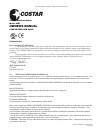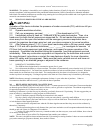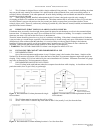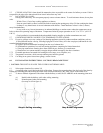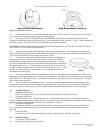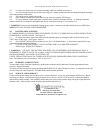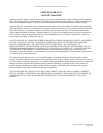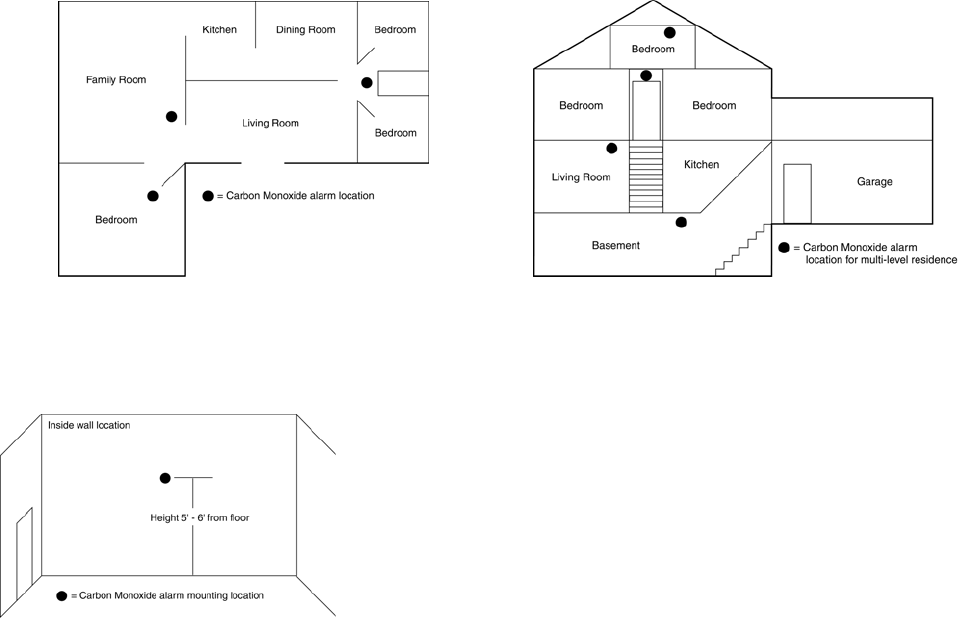
Instruction Manual: COSTAR
®
9SIR, Residential CO Alarm
QGI P/N 099-0057-01 REV 10/26/01
Page 3 of 7
3.3 This CO alarm is designed for use within a single residential living unit only. In a multi-family building, the alarm
may not provide early warning for residents if it is placed outside of the residential units, such as on outside porches, in
corridors, lobbies, basements, or in other apartments. In multi-family buildings, each residential unit should have detectors
installed as previously indicated.
3.4 When properly located, installed, and maintained, this CO alarm is designed to provide early warning of
developing poisonous CO conditions at a reasonable cost. This alarm monitors the air, and when it senses CO, it activates
its built-in alarm. It can provide precious time for you and your family to escape from your residence before CO can
seriously injure or kill. However, such an early warning is possible only if the alarm is located, installed, and maintained as
specified in the Owner's Manual.
4.0 IMPORTANT: WHAT YOUR CO ALARM CAN AND CANNOT DO
If bedroom doors are usually closed at night, alarms should be placed in each bedroom as well as in the common hallway
between them. CO alarms may not sense CO on a different level of a residence or building. For example, a second floor
alarm may not sense a CO leak on the first floor or in the basement.
Therefore, alarms should be placed on every level of a residence or building. If the alarm is located outside of a bedroom,
it may not wake up a sound sleeper, especially if the bedroom door is closed or only partly open. If the alarm is located on a
different level of the residence than the bedrooms, it is even less likely to wake up people sleeping in the bedroom.
Installing CO alarms may qualify you for lower homeowner's insurance rates, but CO alarms are not a substitute for
insurance. Homeowners and renters should continue to insure their lives and property.
! WARNING: The COSTAR
®
Model 9SIR CO Alarm is not designed for marine or RV use.
5.0 INSTALLING THE COSTAR
®
9SIR FOR RESIDENTIAL USE
5.1 RECOMMENDATIONS
One of the most important considerations in any CO alarm system is the location of the alarms. Statistics of the
National Fire Protection Association (NFPA) show that most of the fatal CO occurrences happen at night while people are
sleeping. Early warning of CO is best achieved by the correct installation of CO alarms. Placement of an alarm in a garage
may cause an alarm due to CO from automotive exhaust.
5.2 RECOMMENDED MOUNTING LOCATIONS
Put a CO alarm inside each bedroom where the occupant closes the door while sleeping. A closed door can block
particulate smoke, but CO gas is likely to get through.
Figure 1: Recommended CO alarm placement for single
floor residence.
Figure 2: Recommended CO alarm placement for multi-
level residence.
5.3 This CO alarm must be mounted on the wall or ceiling.
5.4 WALL LOCATION: Locate the top of the alarm at least 3 feet (usually 5 to 6) feet from the floor.
Figure 3: Recommended CO alarm mounting location is 5 to 6 feet from floor.



